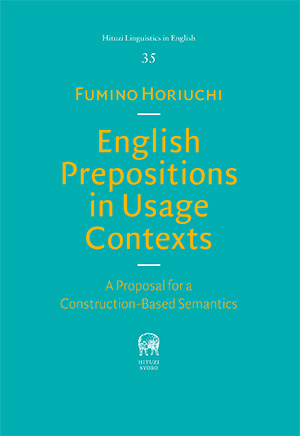2022年2月刊行

Hituzi Linguistics in English No.35
English Prepositions in Usage Contexts
A Proposal for a Construction-Based Semantics
堀内ふみ野(Fumino Horiuchi)著
定価9400円+税 菊判上製カバー装 224頁
ISBN978-4-8234-1110-6
 |
Hituzi Linguistics in English No.35English Prepositions in Usage ContextsA Proposal for a Construction-Based Semantics堀内ふみ野(Fumino Horiuchi)著 定価9400円+税 菊判上製カバー装 224頁 ISBN978-4-8234-1110-6 |


